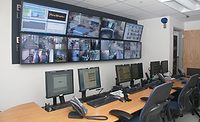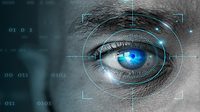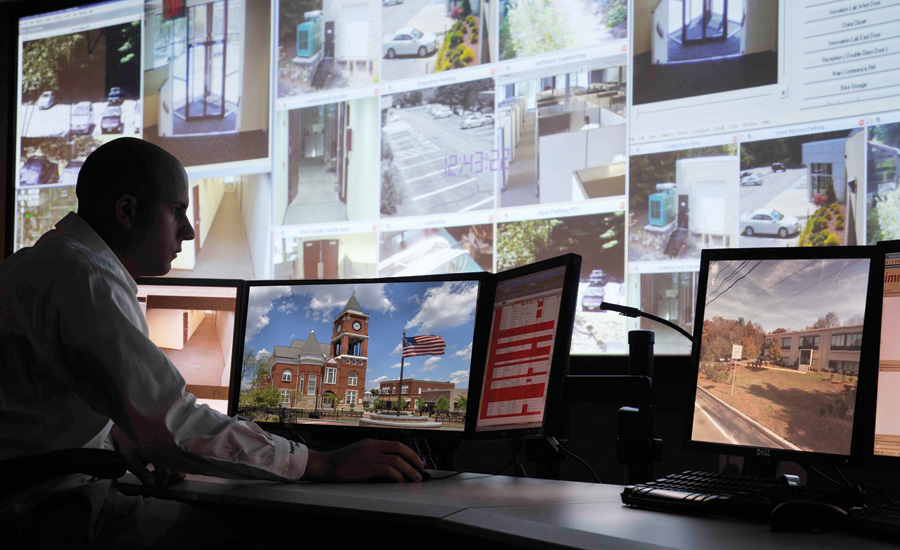Access Control is Only the Beginning for Multi-Function Cards


Keypad readers can support proximity card and tag technologies with an integrated keypad for two factor verification.
Photo courtesy of Farpointe Dara


An innovative campus ID system opens the door to a wide range of services going way beyond traditional security.
Access control as art? A San Francisco-based university dedicated to art, design and creativity has fashioned an innovative access control program that opens the door to a wide range of services going way beyond traditional security.
With a single campus ID, students have secure access to facilities, catch a bite to eat using point-of-sale terminals at food service venues across campus, when boarding the free-to-students city-wide shuttles, for time and attendance, clocking time and billing when using the university’s special heavy duty computers and even to pay for a meal out at neighborhood restaurants.
There is security, of course, but students’ seamless and cashless transactions mean more convenience for them as well as greater efficiencies and reduced operational costs for the educational institution.
Building Swiss Army knife applications into a campus ID card is the trend at some colleges and universities, boasting multi-technology credentials that provide myriad services. Behind the trend, however, are sophisticated technology and integration design that range from nifty database hand-shaking and powerful security platforms to outside-of-the-box strategies and inspired use of communications and computer infrastructure. In many situations, card access control also ties into security video, too.
Diverse College Needs
College campuses are a unique microcosm of a small city, points out Greg Berg of integrator G4S Secure Integration. There are a lot of open spaces which demand robust security practices and emergency management working with local law enforcement, he says, adding that nothing is typical.
And there are campus multi-use ID lessons to be learned by security professionals at all types of enterprises.
Administrators, the campus security specialist and their security systems integrator take well-earned pride in the access control system at the Academy of Art University (AAU) in San Francisco. The educational institution is itself unique with a commitment to leading edge use of technology and inspired solutions. Established in 1929 by Richard Stephens, a fine art painter and creative director for Sunset Magazine, he opened the school in a rented loft to teach advertising art. His granddaughter, Dr. Elisa Stephens, now at the university’s helm, continues the organization’s fine focus on creativity.
As in access control as art.
With an enrollment of more than 18,000 students, AAU is the largest private school of art and design in the U.S. There are many AAU buildings and thousands of people coming and going each day. There are administration and classroom buildings, residence halls, dining facilities and computer labs. Fine art galleries, open to the public, showcase student creations in painting, sculpture, jewelry and fashion. Yet another museum houses a unique collection of rare and vintage automobiles worth millions.
Geographic Challenges
So one access and ID challenge is the scope of this “campus.”
“We like to say that [the whole city of] San Francisco is our campus,” says Mike Petricca, director of campus safety. “Being in an urban setting…we wanted a system that would lock down all our buildings with a single keystroke.” The security management system had to cover more than 200 proximity readers installed on all exterior doors of AAU buildings. A single command center on campus – staffed 24/7 – uses an internal fiber optic network to handle access control, security video and numerous other communications needs while also saving infrastructure money.
AAU turned to security integrator Dave Chritton of Microbiz Security Company to design and install a security system from Honeywell that both protects people and property as well as easily processes thousands of student badges each semester. Among integration efforts: The security management system works seamlessly with intrusion control panels, which protect the galleries and other facilities.
At the beginning of every semester, AAU issues new students a dual technology, multi-application ID card through an enrollment process that Petricca says takes only seconds per each. A card can be disabled with one click. Adds Chritton: “AAU students often come and go like trips to Europe or elsewhere so all students are retained in the database but turned off at the end of each semester or for other reasons. Cards are turned on again for the next term.”
When it comes to prospective students, campus visitors and contractors, temporary badges are handled through the technology. Such badges can be programmed with unique criteria to allow short-term access to certain buildings at specific times, but data on each card is retained in the system so a permanent visitor card can be produced if a need arises in the future.
Customer Service Benefits
It’s important that students feel a sense of belonging in the school. “A large part of that feeling of community is making sure our students feel safe,” says Susan Toland, executive office strategist for AAU. “In addition to the security component, it’s also important to consider the customer service benefit we receive from the system. That helps us make the best of the university experience and ensure maximum participation.”
“Campuses such as AAU pride themselves as being high tech. Card access badging makes sense for students don’t like keys anymore,” observes Chritton. The system his firm designed is integrated with applications such as PeopleSoft and CardSmith.
There is a lot of excitement and evolution when it comes to the future of campuses and multi-technology access control, according to Chritton. “Expect mobile and wireless solutions and more use of the cloud,” he says. Students love their smartphones, he comments, and tomorrow’s access control systems may move from cards to the smartphone, thanks to such tech solutions as Bluetooth and near field communications (NFC).
Access control also plays a role when a college expands. For instance, Baruch College in one of New York City’s most desirable business neighborhoods, midtown Manhattan, uses a security management system to secure its three campuses. New construction and expansion forced a review. Baruch installed a seamless upgrade to manage its 29,000 card holders and that provided the perfect fit. The system integrates with the Baruch student database system, Banner. When a new student is entered into the Banner system, the database automatically imports and populates the database. Any changes to a student record are also imported directly.
Access to Facilities and Events
Magstripe readers mounted on Baruch turnstiles throughout the three campuses control access to all buildings. The access system processes thousands of card transactions per day while cardholders swipe in and out of every building, including the library, sports complex and computer labs.
Ripon College in Ripon, Wisconsin, also has diverse uses for their student IDs, ranging from access control to event management.
Matt Zimmerman, security integration project manager at LaForce Inc., Green Bay, Wisconsin, handled the Ripon project, which includes sophisticated access controls. Generally, Zimmerman sees multi-tasking of IDs with proximity and magstripe becoming more common for lunch programs, the bookstore, library, events and other uses.
There are also two factor ID solutions. For example, some integrators provide their higher education clients with mullion keypad readers that support popular proximity card and tag technologies with an integrated keypad for two factor verification applications. The mullion-sized proximity card reader features an eight-inch read range for increased convenience as the user enters a PIN on the keyboard. Some college and university life safety executives want multi-factor verification with what students have, a card, plus what they know, a PIN.
The Power of Environment Design
The Power of Environment Design
With new construction and remodeling at a high point for colleges and universities, security professionals should consider crime prevention through environment design or CPTED, advises Jonathan Lusher, a security consultant and long-time CPTED advocate.
As a multi-disciplinary approach to deterring criminal behavior through environmental design, CPTED strategies rely upon the ability to influence offender decisions that precede criminal acts through a venue’s natural, social and administrative environments. “Consider architectural and engineering changes as well as maintenance, pavement treatments, landscaping, signage and lighting. Even HVAC can affect how intruders behave,” says Lusher. “CPTED can also impact renovations and it can save money. Some insurance companies mandate CPTED.”
“See and be seen” is an overall goal when it comes to CPTED and natural surveillance. A person is less likely to commit a crime if he or she thinks someone will see them do it.
Dining with Your Eyes
Students at Virginia Commonwealth University (VCU) in Richmond, Virginia, have an alternative to access to prepaid meal plans at the dining hall. The school recently installed iris cameras that scan students’ eyes.
According to Stephen Barr, director of campus services at VCU, “It’s a way to better improve. There is speed, accuracy and better managing of the in-line students.” Students look at it as an “eyeball selfie.” Iris biometrics is, among advantages, a perfect fit for dining halls where cleanliness and not touching – as compared to fingerprint and hand biometrics – are important.
The iris approach also has business advantages. “Speedier handling of students and their dining accounts allows staff to spread out and be more flexible.”
Looking for a reprint of this article?
From high-res PDFs to custom plaques, order your copy today!







